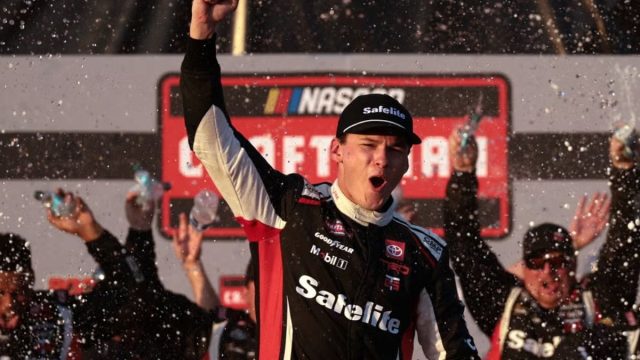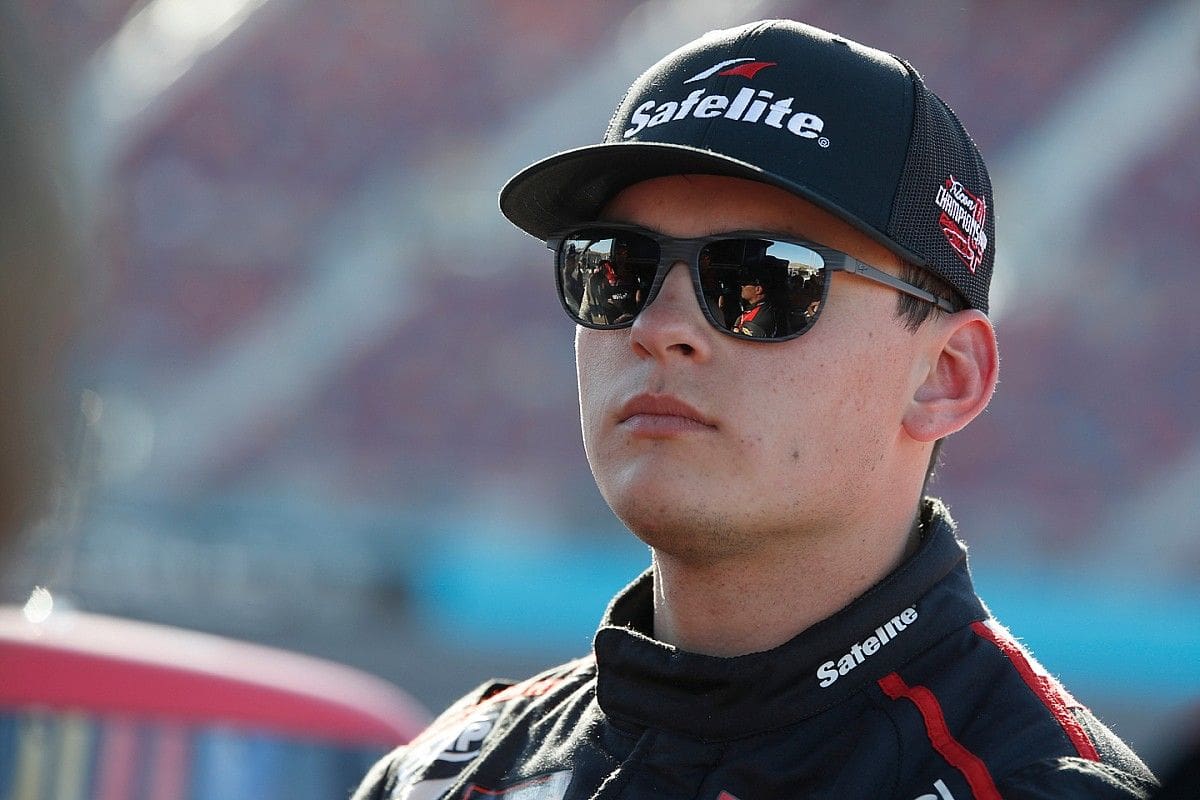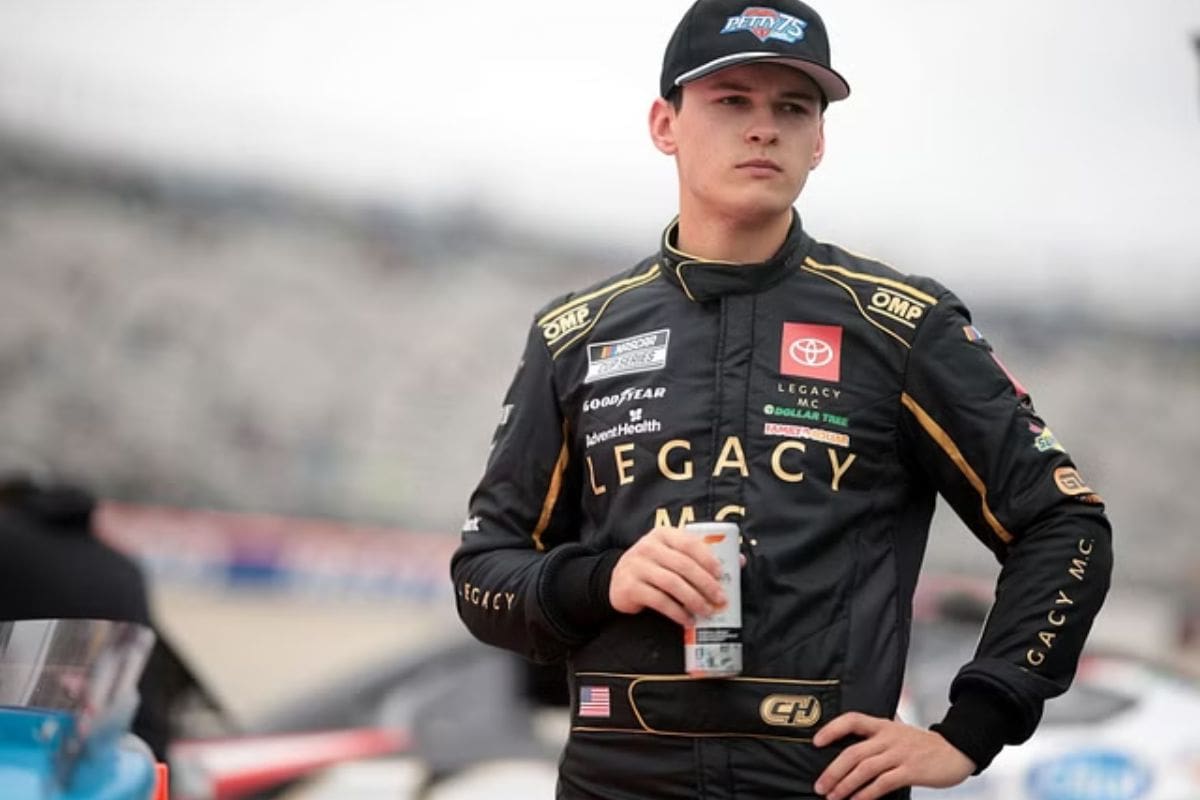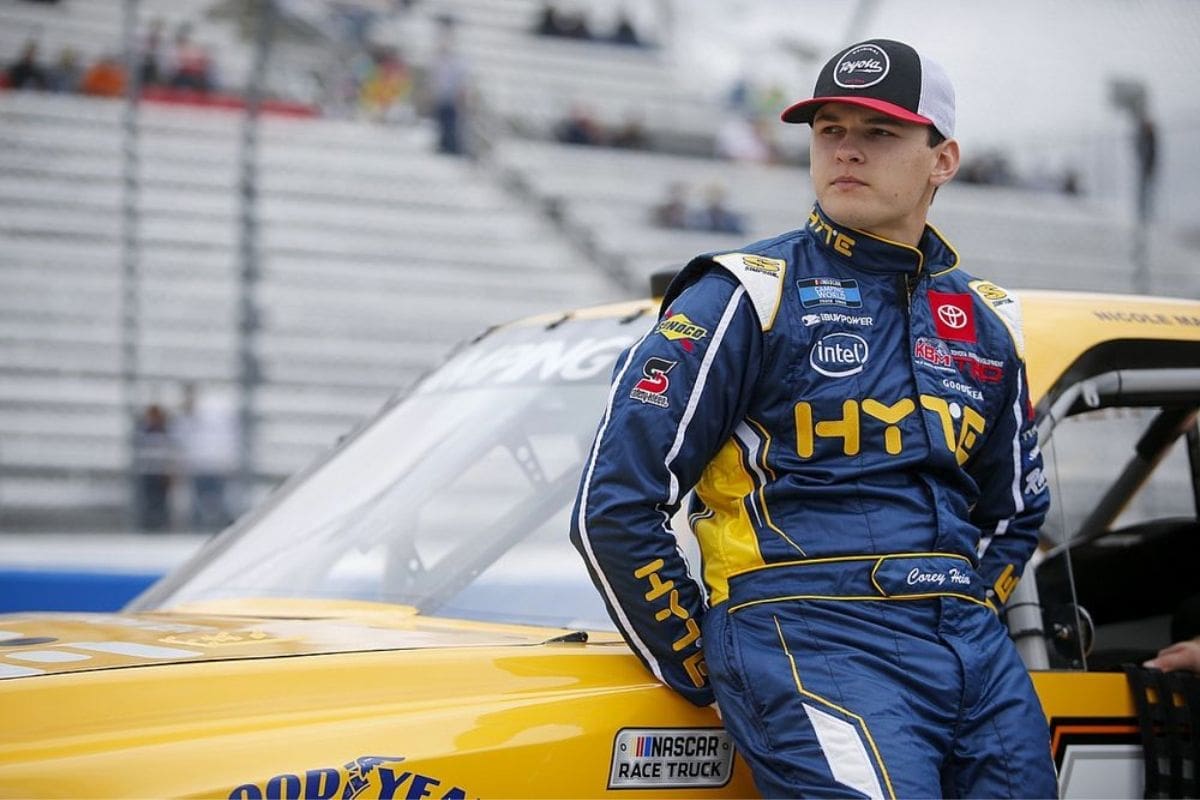Corey Heim’s NASCAR Success in Question: Corey Heim‘s rise in NASCAR has been marked by impressive victories, yet the emerging tensions within Joe Gibbs Racing (JGR) cast a shadow over his path. As rivalries, particularly with teammate Ty Gibbs, intensify, questions arise about the impact of JGR’s internal dynamics on Heim’s performance and future. Additionally, the organization’s seemingly tepid support adds another layer of complexity to his ambitions. How he navigates this turbulent landscape, while exploring potential avenues with 23XI Racing, may ultimately define his career in the coming seasons. What lies ahead for Heim amid this precarious environment?
Key Highlights
- Corey Heim’s ongoing tensions with Joe Gibbs Racing (JGR) raise concerns about team cohesion and performance amid championship aspirations.
- Rivalries, particularly with Ty Gibbs, have created a competitive atmosphere that complicates Heim’s racing strategy and relationships within JGR.
- Despite ten Truck Series victories, Heim faces pressure as competitors like Nick Sanchez and Christian Eckes emerge, challenging his standing.
- Valuable experiences with Legacy Motor Club and 23XI Racing show Heim’s adaptability, but uncertainty with JGR could hinder career progression.
- Denny Hamlin’s endorsement and support from 23XI Racing could provide alternative pathways for Heim, impacting his future in NASCAR.
Corey Heim’s Current Situation and Rivalries
Corey Heim’s voyage in NASCAR is not just a demonstration of his driving skills but also a reflection of the intricate web of rivalries that define the sport. As a promising contender in the Truck Series and a top prospect for Toyota, Heim’s aspirations for the championship are overshadowed by the complex dynamics involving Joe Gibbs Racing (JGR).
The interplay of competition and rivalry in NASCAR is intensified by the high-stakes environment, where drivers navigate speeds of 150-200 mph and the ever-present danger of collision.
Heim’s relationship with JGR, Toyota’s premier team, presents a notable hurdle. Despite racing for Denny Hamlin‘s 23XI Racing, Heim seems unable to forge a strong connection with JGR. This disconnect may stem from residual tensions dating back to their ARCA days, which could be exacerbating his struggles on the track.
The recent drama in Atlanta further complicates matters, as it highlights the potential for unresolved issues to impact a driver’s performance and mental state.
In this high-contact sport, rivalries are not merely antagonistic; they are catalysts for growth and development. For Heim, the interplay of these conflicts may serve as both an obstacle and an opportunity for self-improvement.
Understanding the subtleties of his current situation will be essential for leveraging the challenges posed by rivalries, ultimately determining whether he can harness these experiences to propel himself toward NASCAR success.
The Ongoing Rivalry Between Corey Heim and Ty Gibbs
Rivalries often serve as defining narratives in the world of NASCAR, shaping both the drivers involved and the thorough landscape of the sport. The ongoing feud between Corey Heim and Ty Gibbs presents this phenomenon, emphasizing not only personal animosities but also the broader implications for their respective careers. Their conflict ignited during the 2021 ARCA Menards Series, where a collision between the two 18-year-olds set the stage for a rivalry that continues to simmer.
The tension reached a new height in a recent Atlanta Truck race, where Heim’s decision to align with Austin Hill instead of pushing his JGR teammate, Chandler Smith, raised eyebrows. While Denny Hamlin attempted to mediate by suggesting that Heim made a tactical choice, the underlying rift remains visible. This incident reveals a notable dimension of their rivalry: the struggle for individual identity within a team framework, where alliances can shift based on perceived self-interest.
Moreover, the absence of reconciliation between Heim and Gibbs stands in glaring contrast to other historical NASCAR rivalries that eventually evolved into partnerships, such as that of Richard Childress and Kyle Busch. The lack of resolution in this case not only hampers teamwork within JGR but may also hinder both drivers’ potential for growth.
As the NASCAR season progresses, the implications of this rivalry will likely reverberate, affecting not only their performances but also the dynamics within their team and the tactical decisions that follow.
Corey Heim’s Achievements and JGR’s Reaction
Success on the racetrack is often measured not just by wins but by the path of a driver’s career, and Corey Heim‘s accomplishments in the NASCAR Truck Series highlight his potential within the sport. With ten career Truck Series victories amassed in fewer than three full-time seasons, Heim has illustrated remarkable skill and consistency. His performance last year positioned him as a championship frontrunner, a narrative abruptly altered by unforeseen circumstances involving fellow competitors.
Despite these awards, Heim’s future appears uncertain, particularly in view of competitors like Nick Sanchez and Christian Eckes advancing to the Xfinity Series. NASCAR expert Eric Estepp emphasizes that while Heim has engaged in part-time Xfinity races and even made a Cup debut with 23XI Racing, there seems to be an oversight regarding his Truck Series achievements by Joe Gibbs Racing (JGR).
“Heim has done a lot of part-time Xfinity stuff with Sam Hunt Racing. He even made a Cup start this year at Nashville with 23XI. But what he has done in Trucks last year was phenomenal – 10 career Truck Series wins in less than three full-time seasons. He had the championship locked up last year before Hocevar happened. And he is very much in contention this season.”-(estepp)
Speculation abounds regarding potential tensions between Heim and JGR, particularly in the context of his rivalry with Ty Gibbs during their ARCA Menards Series days. Decisions made on the track, such as Heim’s choice not to assist JGR driver Chandler Smith at Atlanta, raise questions about his alignment with the organization.
“Many speculate that there’s tension between Heim and the folks at Joe Gibbs Racing. Heim and Ty Gibbs went back and forth during their ARCA Menards Series days. At Atlanta, Heim had the opportunity to push JGR driver Chandler Smith to the lead – opted not to. Austin Hill ultimately won the race for RCR.”-(estepp)
This complexity could contribute to JGR’s seemingly lukewarm recognition of Heim’s successes. As he navigates this intricate landscape, the contrast of Heim’s undeniable talent against the backdrop of JGR’s response may ultimately define his course in NASCAR.
Corey Heim’s Other Opportunities with Toyota
The complexities of Corey Heim‘s relationship with Joe Gibbs Racing may cast a shadow over his future with the organization, yet opportunities are still emerging for him within Toyota‘s broader framework. This year, Heim has made notable strides in the NASCAR Cup Series, demonstrating his adaptability and potential as a driver under the Toyota banner. His two starts—one for Legacy Motor Club and another for 23XI Racing—signify that he is not relegated to the sidelines despite the turbulence at JGR.
Heim’s substitution for Erik Jones at Dover was a crucial moment, positioning him within the competitive landscape of the sport during a time of need. Although he faced challenges at Nashville, where he finished 29th, the experience proved invaluable. His performance garnered trust from 23XI Racing executives, indicating that they recognize his driving capabilities and potential for future contributions, despite their current charter challenges.
These engagements highlight a significant aspect of Heim’s career: the ability to cultivate relationships and earn credibility within Toyota’s network. While uncertainties loom regarding JGR’s internal dynamics, Heim’s involvement with other teams illustrates Toyota’s willingness to investigate diverse avenues for their drivers.
This adaptive approach could open further doors for Heim, allowing him to solidify his standing in NASCAR and potentially shift into a more permanent role within the Toyota ecosystem. The path may be fraught with challenges, but Heim’s current course suggests a promising future, provided he capitalizes on these opportunities.
Statements from 23XI Racing and Future Uncertainty
Frequently, the dialogue surrounding Corey Heim‘s future in NASCAR reflects both optimism and uncertainty, particularly stemming from 23XI Racing‘s recent statements. Steve Lauletta, president of 23XI Racing, lauded Heim as the premier Toyota prospect, emphasizing his potential as “an up-and-coming star.” This sentiment was echoed by Denny Hamlin, further solidifying the organization’s interest in Heim driving the No. 50 Toyota at the Nashville race. Lauletta’s comments suggest a strong endorsement, positioning Heim as a key player in Toyota’s future racing plan.
“Corey is undoubtedly an up-and-coming star, and we look forward to working with him as he prepares to race at Nashville. Mobil 1 has a history of working with some of the best young talent in racing, and I can’t think of a better person than Corey to drive the No. 50 Toyota at Nashville.”-(steve)
However, this enthusiasm is clouded by the ongoing tensions between NASCAR and 23XI regarding the charter deal, which casts a shadow over Heim’s prospects. The current impasse raises critical questions about Heim’s immediate future within the organization.
As 23XI navigates these complexities, the viability of Heim’s role remains precarious. Should the charter situation remain unresolved, Heim may find his opportunities stymied, necessitating a delicate balancing act between appeasing 23XI and managing relationships with Joe Gibbs Racing (JGR).
The duality of support from 23XI and the uncertainty stemming from the charter negotiations highlights the precarious nature of NASCAR’s competitive landscape. It emphasizes the importance of tactical navigation in the sport, where alliances can shift rapidly.
As Heim prepares for Nashville, he must not only focus on performance but also maneuver through the intricate dynamics that could define his career path in the coming seasons. The intersection of talent and opportunity remains a critical axis for Heim in this evolving narrative.
News in Brief: Corey Heim’s NASCAR Success in Question
Corey Heim’s path within NASCAR remains precarious amid internal tensions at Joe Gibbs Racing. The rivalry with Ty Gibbs, coupled with insufficient backing from the organization, poses considerable barriers to continued success. However, potential opportunities with 23XI Racing may offer a tactical pivot, allowing Heim to harness his considerable talent in a more supportive environment. Steering through these dynamics will be crucial for sustaining a successful career and achieving championship aspirations in a highly competitive landscape.
ALSO READ: Corey Heim’s Bold Strategy Fails at Atlanta: Still Proud of His Aggressive Play




